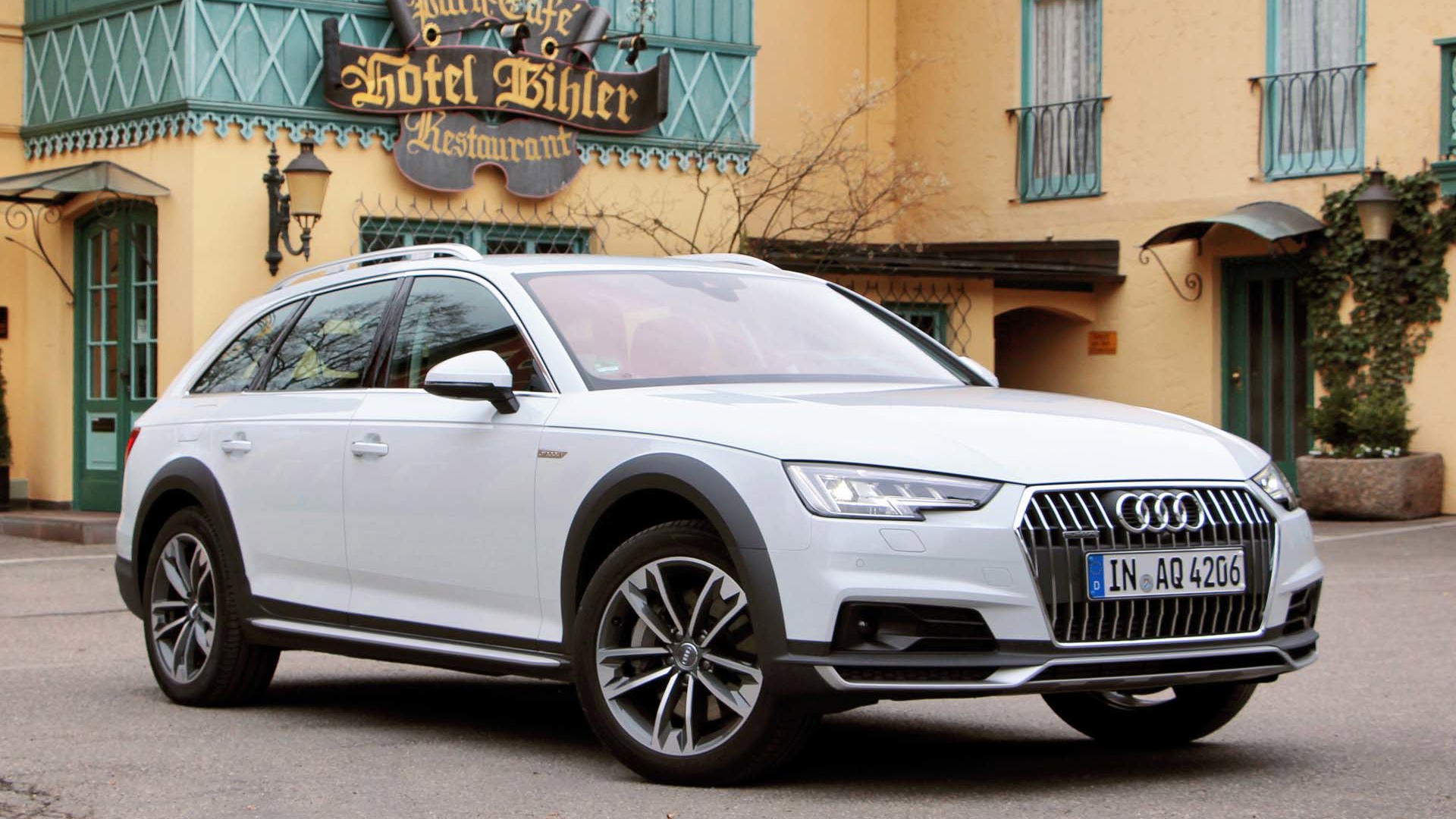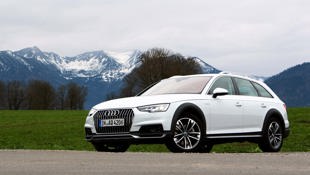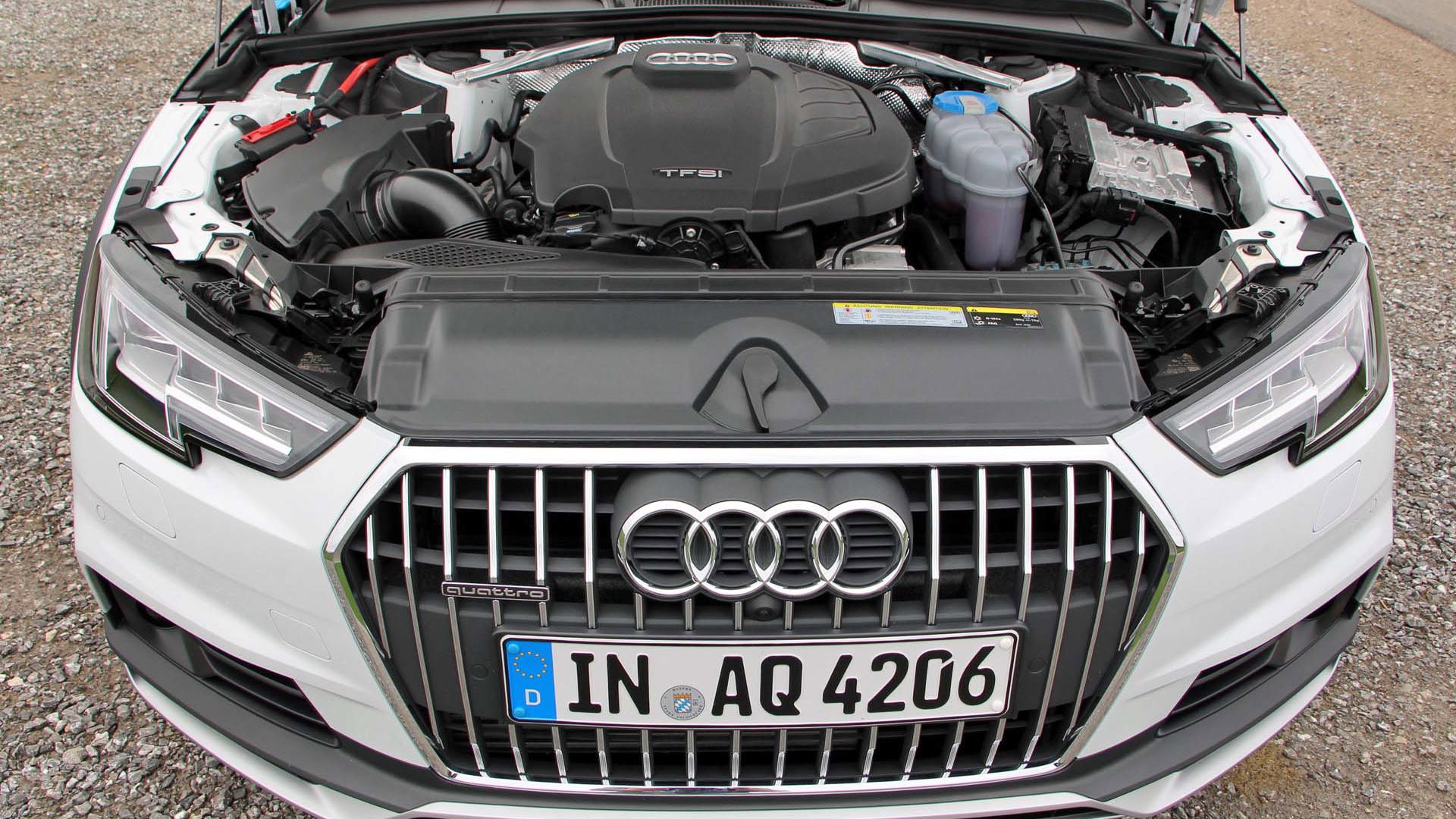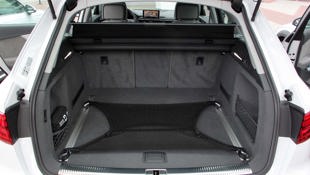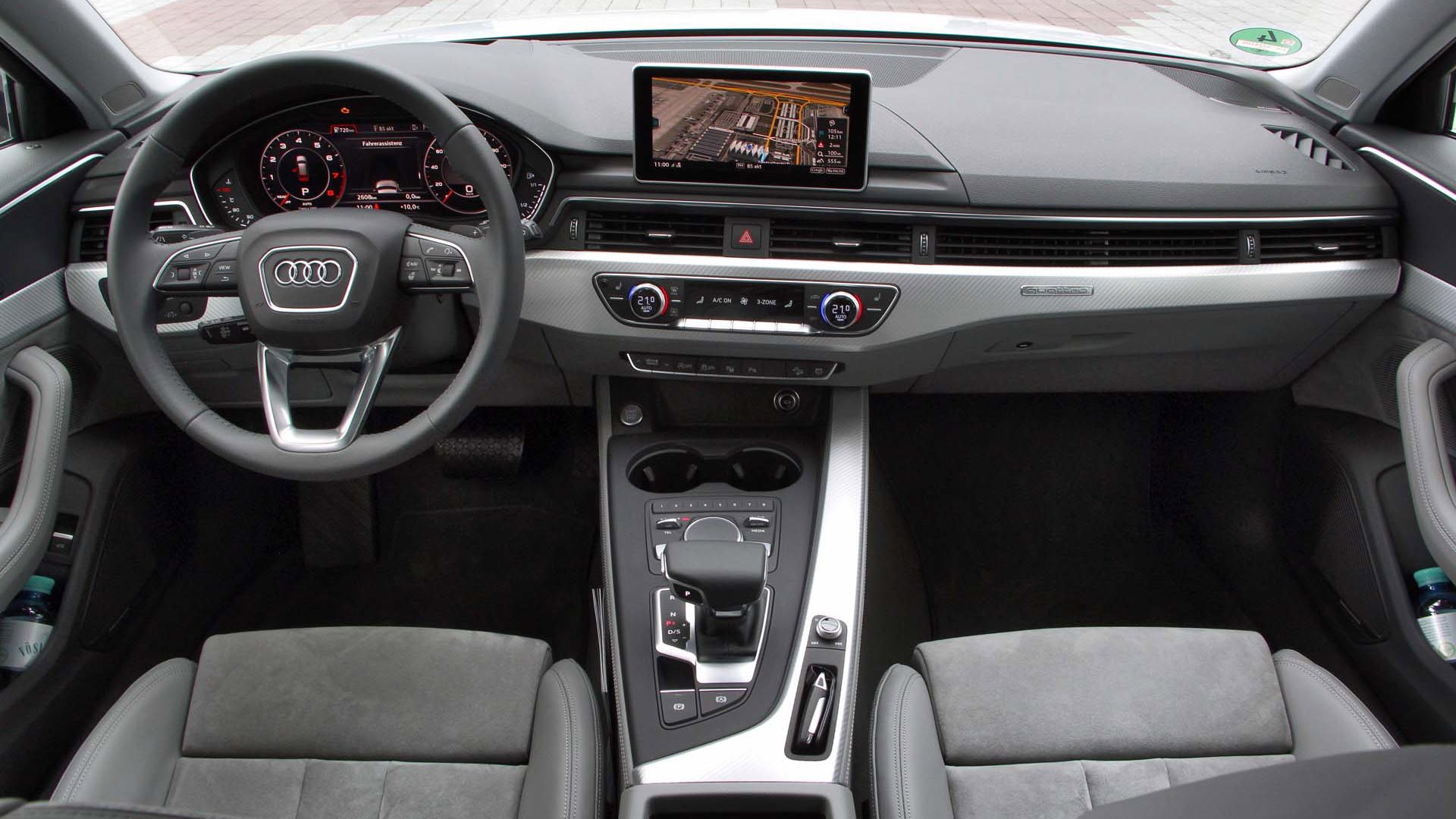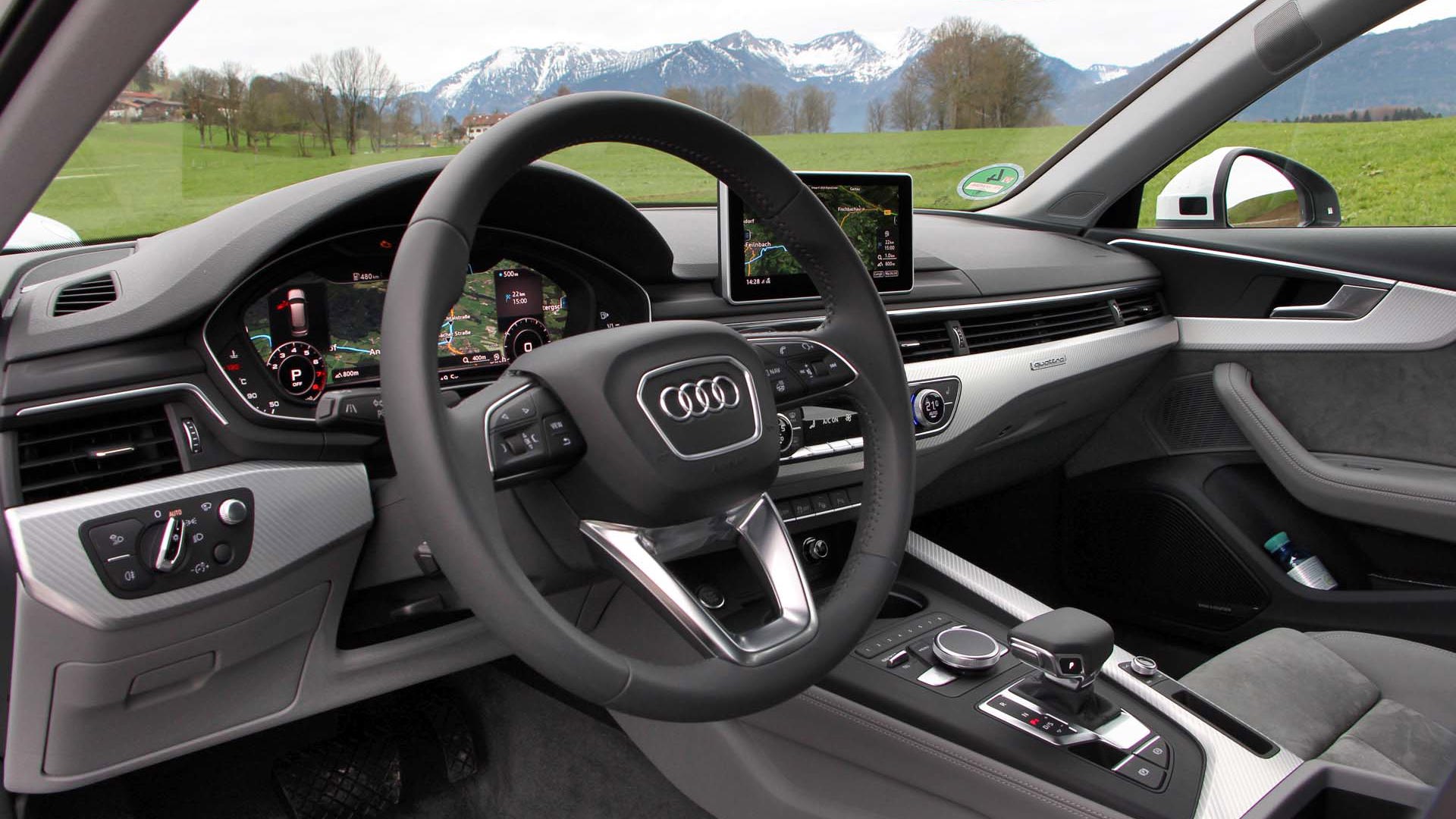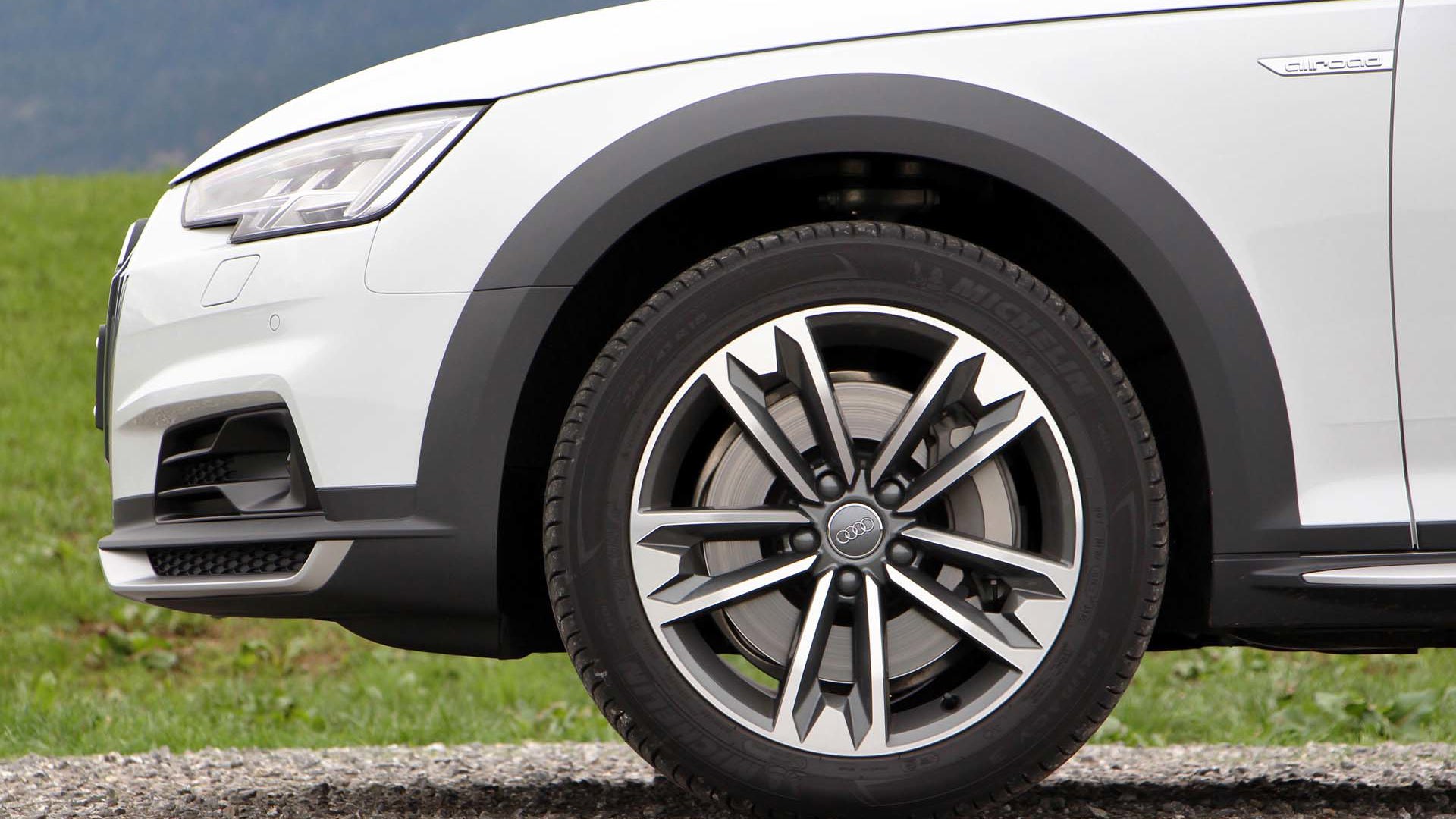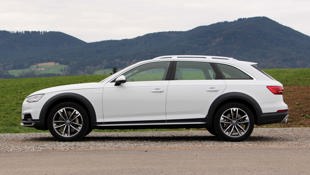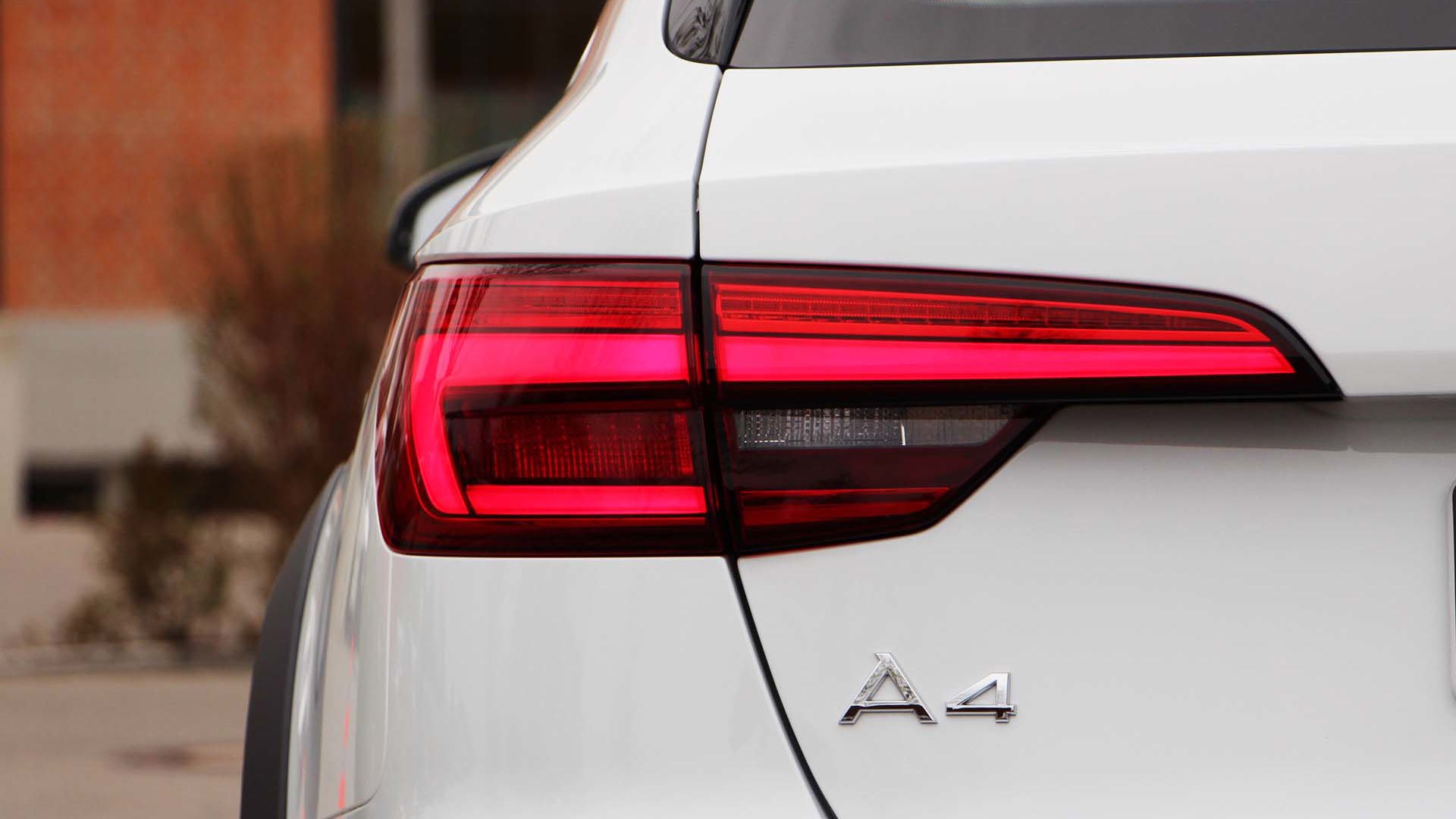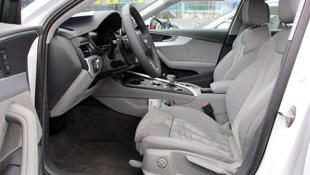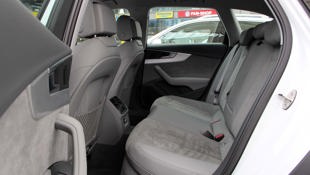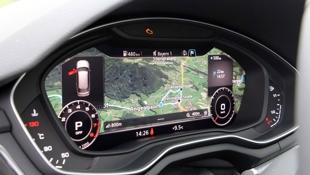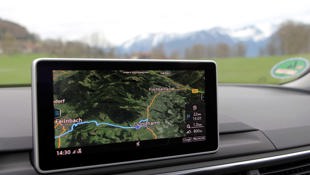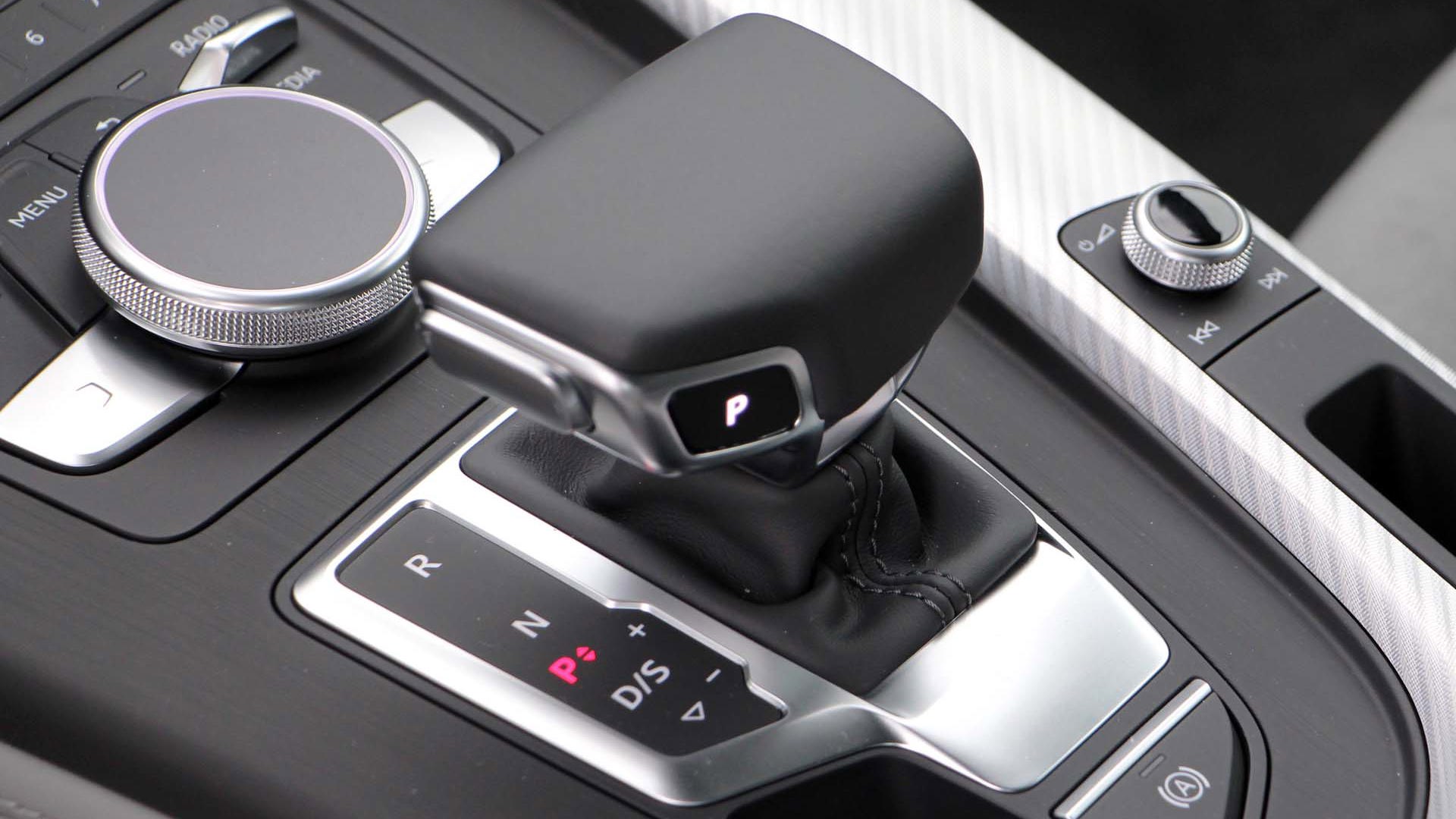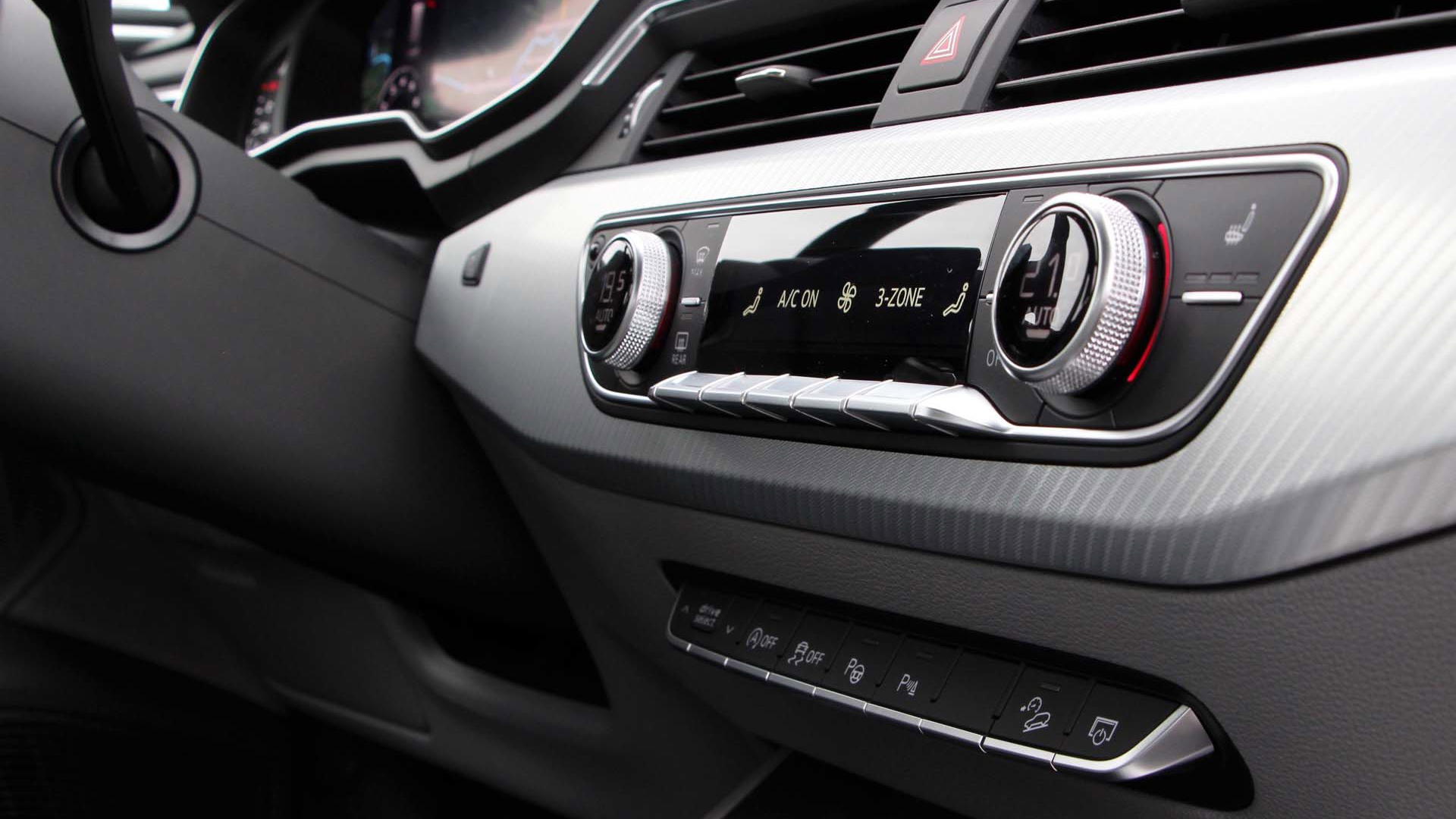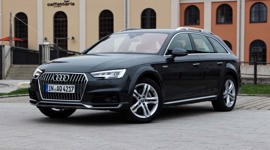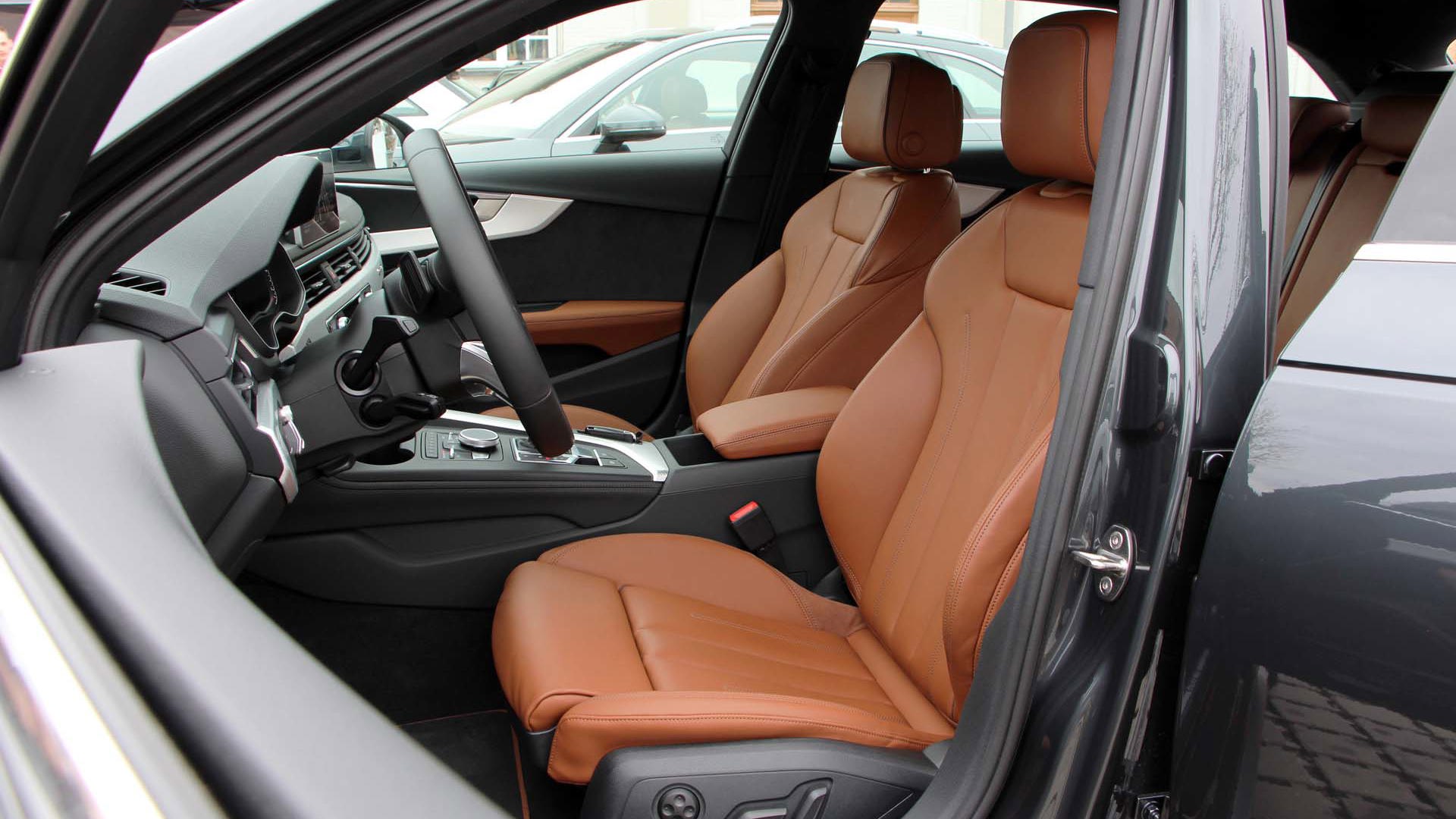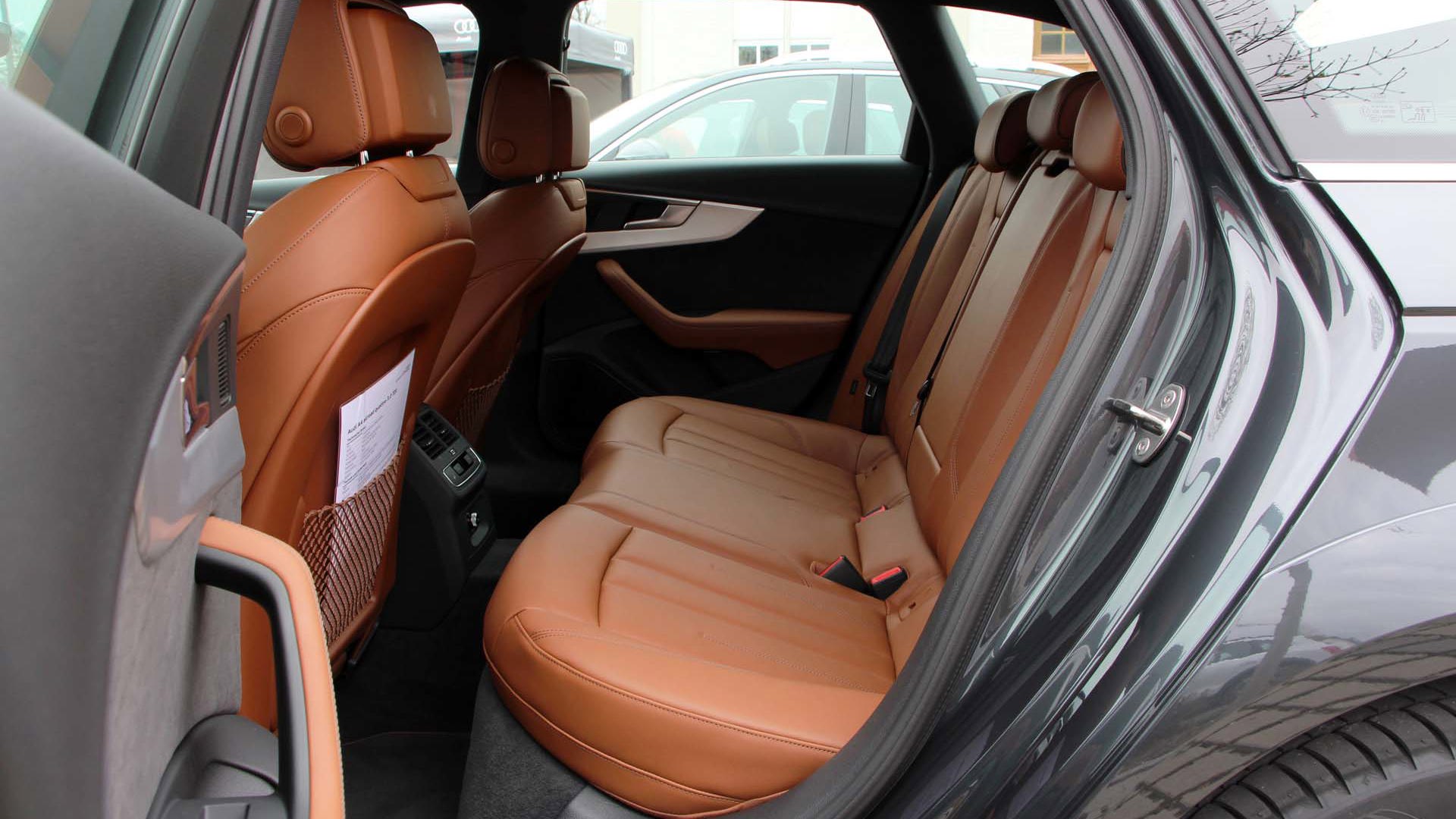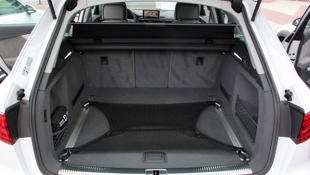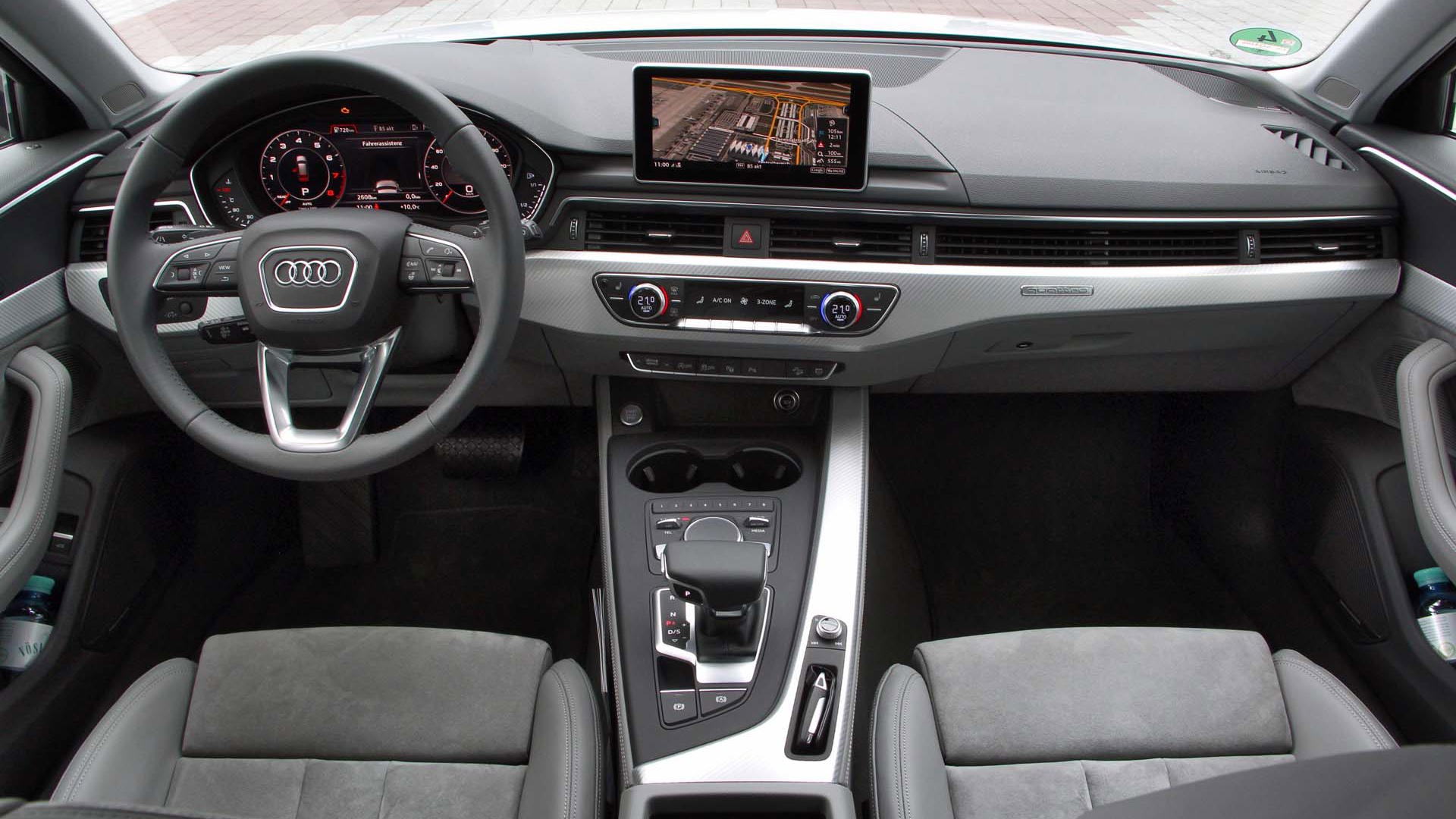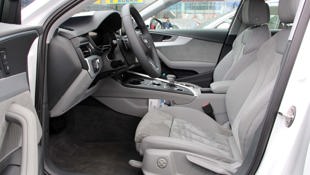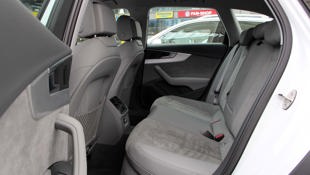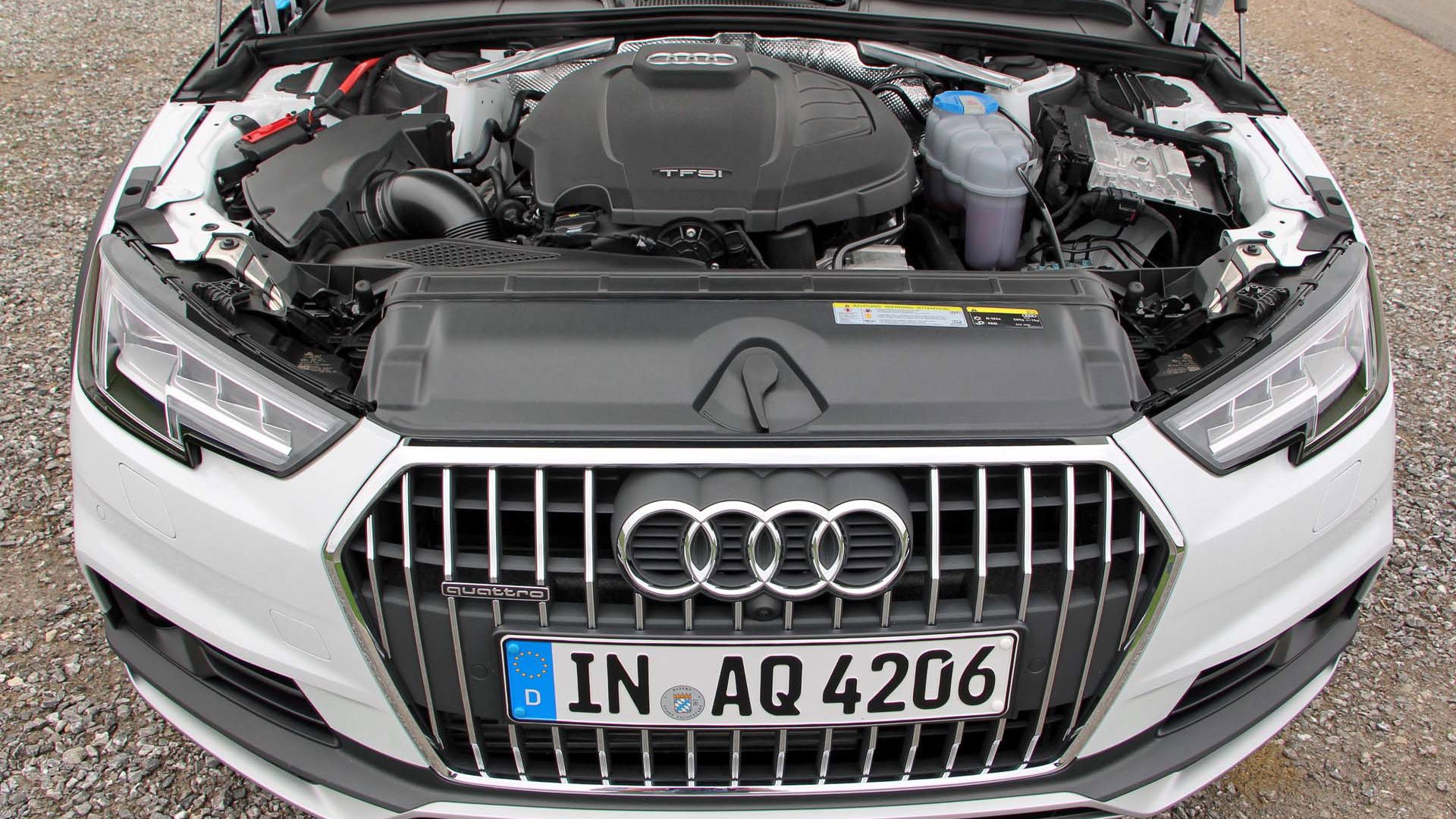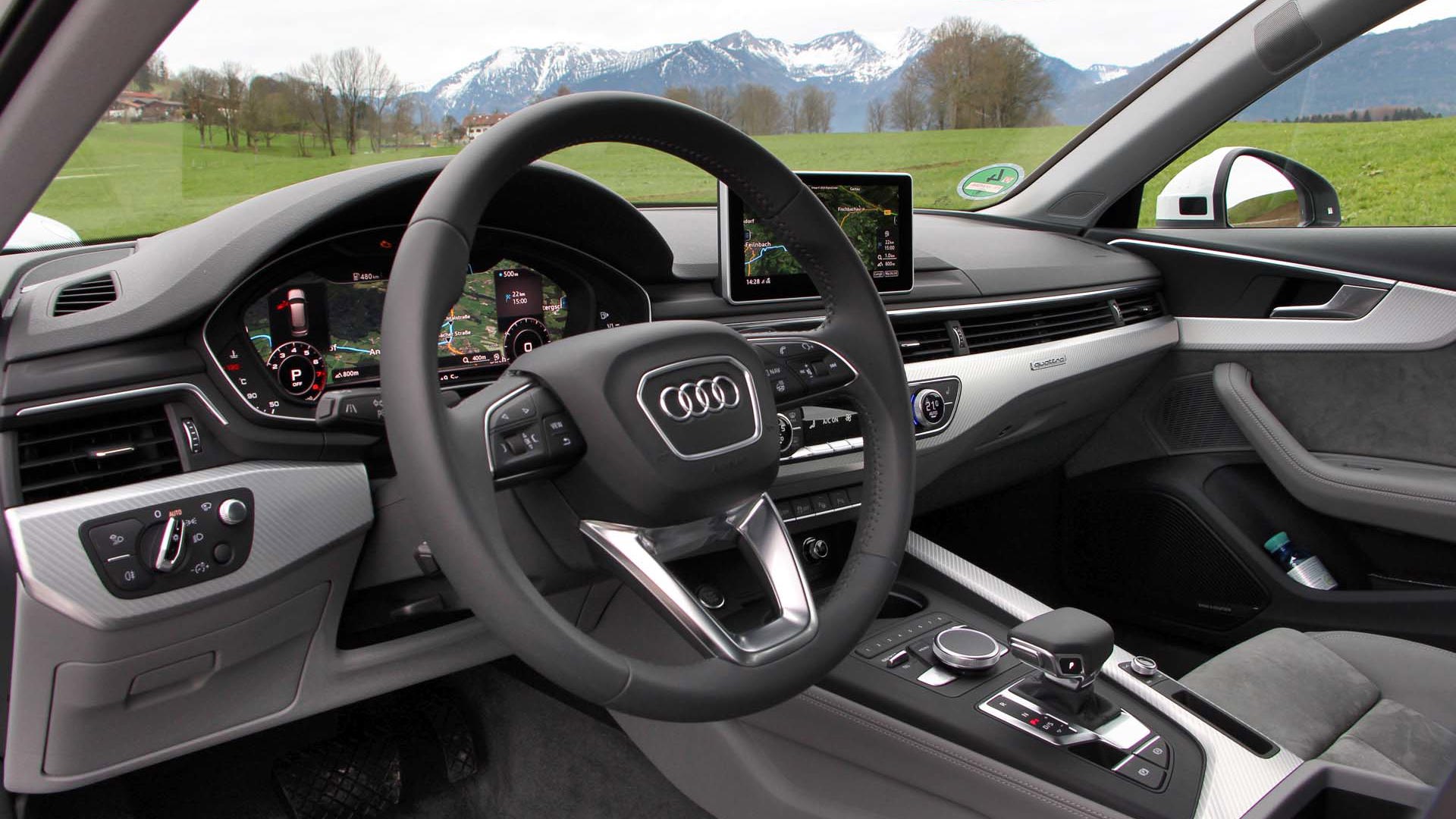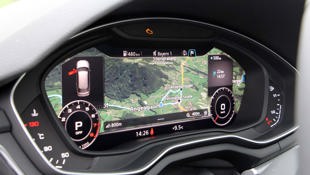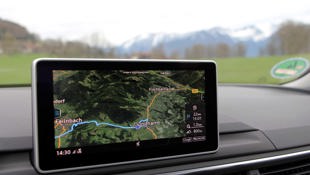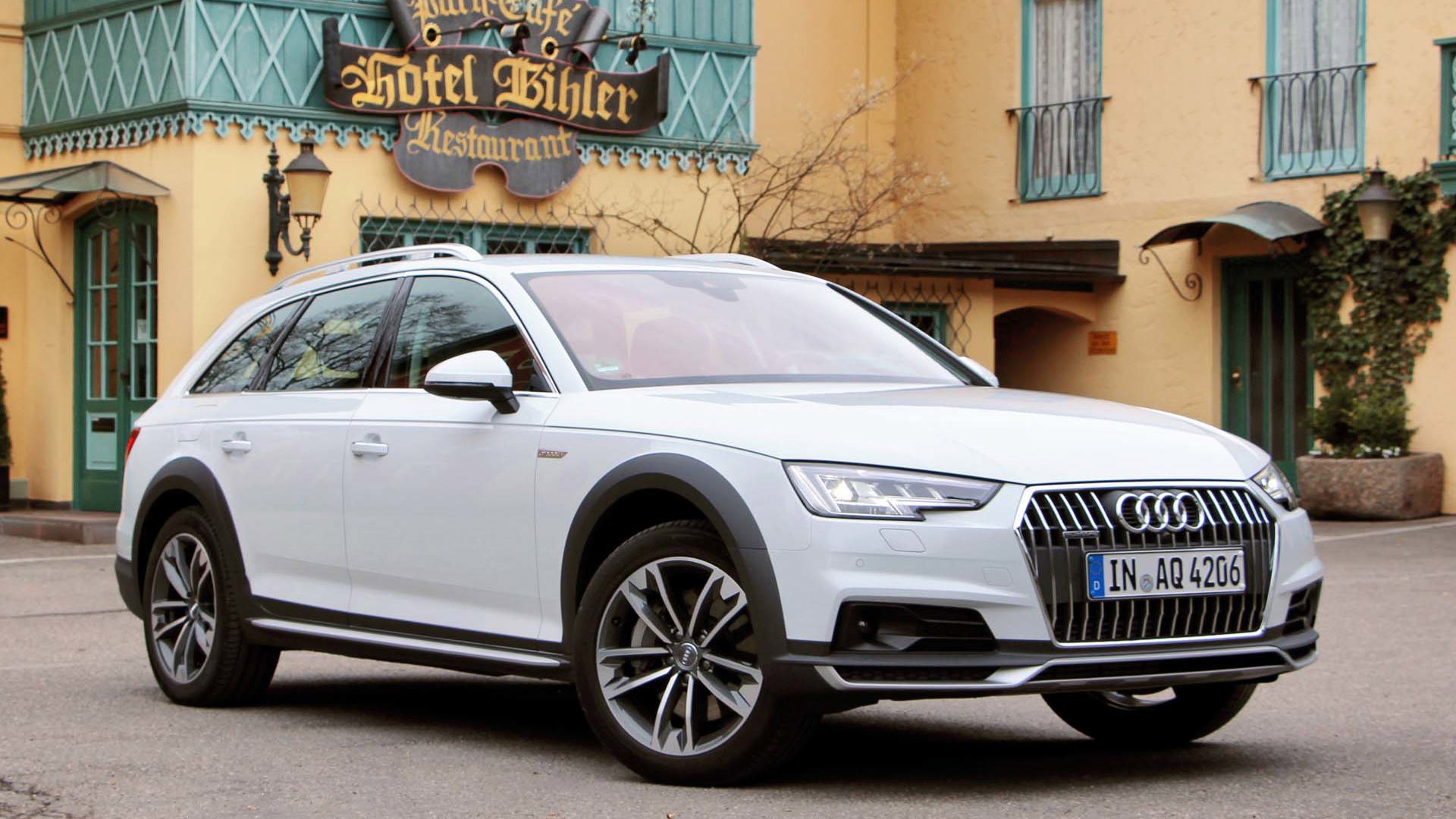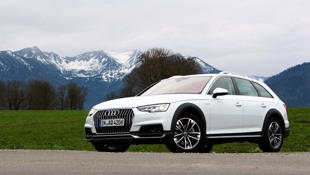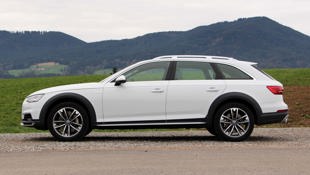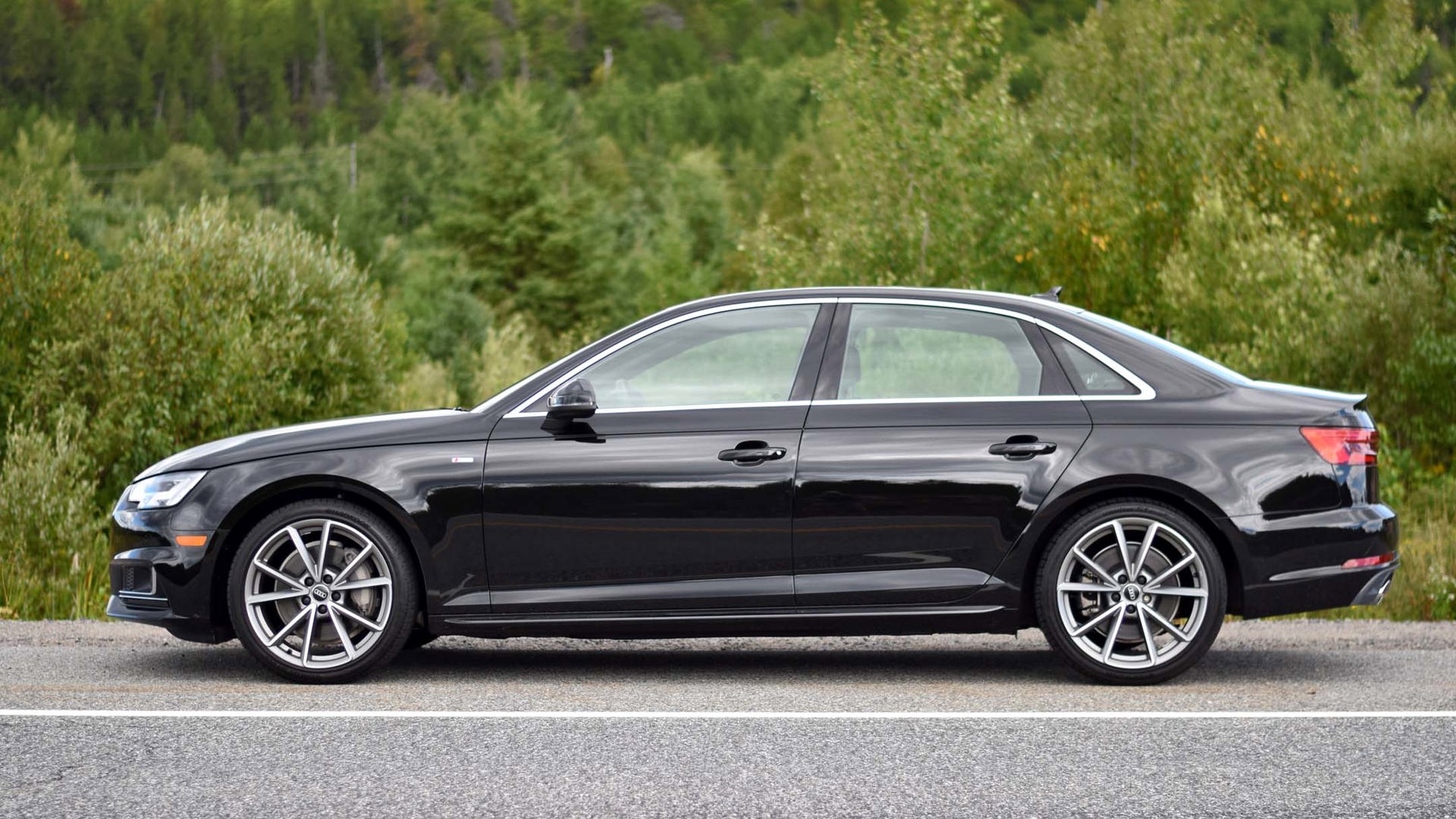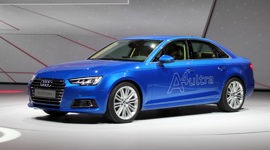We can go on and on about the gorgeous Audi wagons that we want (and they are many), but the cries of North American long roof aficionados do not a business case make, and Audi is happy to leave the traditional wagon market to BMW, Mercedes and Volvo. What we get is a wagon with body cladding and raised suspension based on Audi’s superb A4 line, at the most wagon-y end of the crossover spectrum. It’s a happy medium, as those that want a better-driving crossover can call it a crossover, and those that want an S4 Avant can drop the suspension and turn up the boost. Everyone’s happy, right?
While some might be committing based on the Allroad’s rugged good looks, my bet is on that wonderfully easy-to-use cargo space being the main attraction.
It’s a niche that has done well for Audi, with Allroads accounting for a good 10 percent of the A4 sales in Canada. While some might be committing based on the Allroad’s rugged good looks, my bet is on that wonderfully easy-to-use cargo space being the main attraction, so I’ll start there. Audi lists 505 L for the trunk, but unlike sedans that might come close to that number, all of it is easily accessed with a power tailgate, with the cargo cover connected to the liftgate rising out of the way as it swings open. The cargo area is also finished in materials better than you find in many interiors, carpeted and trimmed in cabin-grade materials. Practically, the seatbacks are divided 40/20/40, so the rear seats can be dropped in various configurations, with a maximum 1,510 L available with all seats folded, or a handy ski/snowboard pass-through for the alpine set.
Rear passenger space may be up on paper, but the intrusive driveline tunnel hump remains, and legroom/foot space is at a premium even in the outboard seats. Once you squeeze in, however, you will enjoy the Alcantara-trimmed and reasonably supportive seats.
The driver and front passenger are, of course, treated to something altogether different. There is plenty of space for heads, lovely perches for sensitive elbows, and your fingers will simply be spoiled. Everything in the Audi cabin is a joy to touch. The buttery leather steering wheel, the metal and leather shifter, the substantial dial for controlling Audi’s intuitive interface, the firm damping for every switch, button and knob, even the grip and solidity of the rubber mat lining the under-armrest storage.
Talking points: 2017 Audi A4 Allroad Quattro: 7 Things You Need to Know
As with the sensory feedback, the technology is well-executed in every area. Graphics are crisp and clear, menus logical and progressive, and response time is immediate. Adding to the geeky cool factor is a fully digital gauge cluster called virtual cockpit, with video game–quality resolution and speed, and a variable layout that allows the map to take over most of the real estate for easy and obvious route guidance preview and instructions. Alternatively, one can keep the tach and speed ‘gauges’ larger, with anything from audio to fuel consumption displayed between them. The MMI system can be controlled via buttons on the steering wheel or the large central knob on the console. Conveniently, the transmission shifter serves as a pedestal on which to rest your wrist, allowing easier control on the knob, or when scribbling letters on the touch-sensitive pad, whose handwriting recognition allows you to write info into the menus (as when searching for a name in your contacts or entering a destination into the nav system). It’s an easy, intuitive system to control, and it makes driving easier rather than adding distractions when driving; and this was with me searching out navigation instructions and audio while discovering new roads around Munich in the German heartland.
The seats were superb and supportive, and though manually adjustable in the models tested, ours likely will include power seats as basic equipment if past history is any indicator. From the driver’s seat, you’re controlling a machine that can pilot you safely and as quickly as legally and morally permissible, though you will obviously find more joy in the experience elsewhere in the Audi lineup (I’m looking at you, S3…). Personally, I find a touch more weight in the steering reassuring, but the incredible lightness of the basic steering setting makes it very easy to spin the wheel about during parking maneuvers, but seems a little vague and slow to respond as speeds climb. As with most newer Audis, you can control the steering response via Drive Select, which also controls other driving settings (like throttle response and suspension firmness), but the steering never does seem to firm up substantially; I suspect that many looking for ease of use over cornering response will find this the right balance.
The powertrain doesn’t offer any surprises: 2.0L turbo paired with Audi’s signature Quattro all-wheel drive with a dual-clutch auto sandwiched in between. However, Audi isn’t just resting on its laurels and here they squeeze out 252 hp from 5,000 to 6,000 rpm, and 273 lb-ft of torque anywhere between 1,600 and 4,500. This generation of 2.0T arrives at its power via the latest iteration fuel injection and variable valve timing, making for a substantial power band, the engine always eager and pressing me back into the seat unexpectedly when I was expecting more typical sluggish crossover response. Audi pegs the Allroad’s acceleration from 0–100 km/h at 6.1 seconds.
While A4 Allroad figures aren’t yet available, the 2017 A4 2.0T sedan is estimated at 9.8/7.7 L/100 km city/highway and 8.8 combined, and the Allroad is unlikely to be significantly higher. Part of those fuel savings are earned through Audi’s continually evolving direct injection and timing, but they’ve thrown in an engine start-stop system. That stop-start system might be a tad overeager, and at some low-speed almost-stops it can induce a jarring lurch. Out on the open road, Audi’s 2.0T is as smooth as they come in the turbo-four territory that every luxury brand is now jumping into.
The Allroad comes standard with the S Tronic seven-speed dual-clutch transmission, and it remains a smooth yet quick-shifting unit, its low-speed mannerisms continuing to improve if not yet as smooth as a conventional automatic. There is also a Sport mode that holds gears a bit longer for more spirited acceleration and downshifts earlier in the braking process (and here we are obligated to wish for that lower, stiffer suspension that underpins the sedan and European Avant models).
Sport mode in the transmission pairs nicely with Dynamic in Audi’s Drive Select settings, and despite the extra 23 mm of ride height and extra 34 mm of ground clearance over the sedan, the Allroad can scoot along twisting roads with an alacrity that beats out most any other high-riding crossover, if not any of the sport sedans in the luxury segment. Drive Select also offers several other modes to cater to various driving moods or conditions, from Efficiency to Offroad as well as the aforementioned Sport. An Individual setting allows you to separately adjust the different components controlled by Drive Select, setting each system incorporated into the Drive Select mix, including steering, suspension and engine to suit your personal taste or mood. Taking advantage of the extra ground clearance of the Allroad, an Offroad setting in Drive Select focuses on low-traction terrain to tackle particularly tough trails to the cottage or chalet, locking the Quattro in all-wheel-drive mode and adjusting engine, transmission, suspension as well as ABS and traction control for ideal performance on light off-road terrain.
Another area where Audi’s early adoption has paid off is all-wheel drive. Audi’s Quattro AWD has been around for over 35 years now, launched to spectacular success in WRC with the Quattro Group B rally car in 1980 and as the first sport-oriented all-wheel drive system in a road car, also named Quattro. To complete the set of four, Audi eventually named its in-house tuning arm Quattro GmbH (or quattro GmbH if you want to respect Audi’s branding over the rules of grammar). Anyhow, being as the Allroad is officially the A4 Allroad Quattro (or again, A4 allroad quattro), Audi chose this model in which to debut the next evolution of its AWD system.
The latest Vorsprung durch Technik here is a multi-plate clutch at the transmission takeoff, which can decouple the drive shaft to the rear differential, while another clutch disengages the rear differential when the AWD controller determines that front-drive is sufficient for surface conditions. The main benefit is a distinct improvement in highway or cruising efficiency, where the Allroad can avoid drag losses of the rear differentials and gears without any disadvantage in terms of performance in low-traction situations. Control over the distribution of torque falls to the electronic brain of Quattro, which records and analyzes data from sensors for steering angle, lateral and longitudinal acceleration, engine torque and more, and can adjust torque distribution predictively (balancing torque evenly when accelerating in slippery conditions or in FWD mode when cruising on the highway) or reactively (i.e. when hitting a patch of ice or gravel unexpectedly).
All 100 percent of the torque can be sent to the front or rear wheels as conditions dictate, and it is seamless in operation whether shifting power or decoupling the clutches when coasting in FWD mode.
The A4 Allroad is the most car-like of crossovers (along with its only similar competitor, the Volvo V60 Cross Country), and it is based on a car that is simply spectacular. As an all-around driving experience, it’s a little easier to get into with the extra height, the visibility in all directions is good, and while being practical wagon at heart, it has the soul of an athlete (albeit one that is getting on in years). As mentioned, the engine comes on strong as you pull away, and the strong torque of the engine is couple with a steering and suspension to match your driving mood and the adaptable and Quattro all-wheel drive balances the power seamlessly. It should be noted that Audi shaved significant weight while increasing rigidity of this generation, improving both comfort and handling. Curb weight lands at 1,580 kg (which is about 200 kg lighter), so everything is better, from acceleration to suspension response.
On the highway it is stable well above our speed limits (good ol’ Autobahn derestricted sections…), but when the road tightens, it can still corner with the agility of a car and leans gradually in side-to-side transitions, communicating its limits so you don’t exceed them. It’s not meant to be a sport sedan, but stills serves admirably when the lure of a series of curves or corners calls.
Although only subtly different in appearance, with new headlights, taillights, grille and more chiseled body, it hides a drastically improved vehicle that has improved every little thing without straying from the formula that has endeared it to owners. With the mix of practicality, only modest sacrifices to performance for the sake of added versatility, the A4 Allroad is a standout in the small luxury segment as an excellent all-rounder to go along with Audi’s unparalleled refinement, quality and technology. The masses are eager for crossover SUVs these days, and this is one more option in the Audi showroom along with Q3, Q5 and Q7, with more car-like dynamics and the convenience of a wagon for those that still value driving stability over seating position and ground clearance.
The Allroad is expected to land here in Canada in late 2016, with a similar markup over the sedan as the previous Allroad to its A4 equivalent, so we’ll speculate that a base Komfort will run about $48K and to range up to $55K for the Technik, plus a few grand more for various tech and convenience packages.
